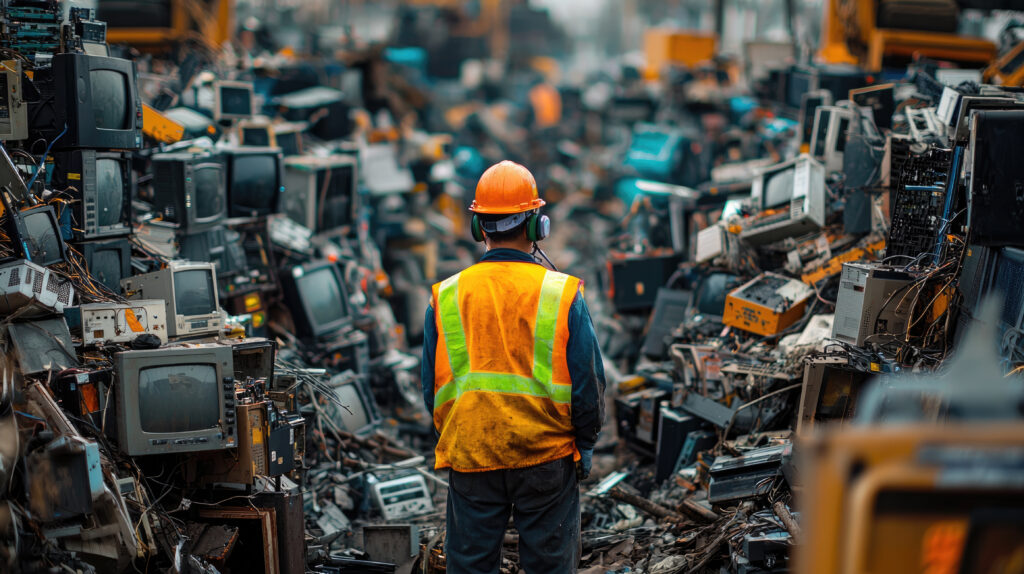In my old job, the key performance indicator of my success was growth.
I was responsible for expanding operations, increasing revenue, and maximizing profit. But growth using these indicators as measuring tools is never the whole story. Of course, I was always excited to grow. I absolutely understood the necessity of hitting financial targets. But there is a way to win the revenue growth game while simultaneously losing vision of what growth is truly supposed to represent.
Growth is in longevity.
Yes, yes, congratulations on your success this year! Now, go out and do it again for the next three to five to ten years and beyond. And build your success in a way that is good for your entire community – internal and external. For businesses, sustainable growth means that growth should develop from the foundation up. It takes an investment of time, and money, to do things right. Unfortunately, any company aiming for sustainable growth today is working against the flow of the global system. External societal wants and internal C-suite pressures require fast, new, better, and cheap. It matters not how or where those demands are manufactured. They absolutely exist. Maximum outflows with minimum inputs seem to be what everyone is doing.
Who are we trying to impress?
Marketing messages everywhere are telling us that we need shiny new things. We need the bigger, updated, best brand – and we need it in a few colors too! “Keeping up with the Joneses” is real, and it drives us to be constantly comparing ourselves to others. And now today, we do not just have to keep up with the “Joneses” in our neighborhood, but we also must keep up with the Kardashians and everyone else in our social media feeds.
It was as early as elementary school that I became aware that my daughter was already sucked into the comparison psychology. Our young children should not be trying to figure out how they stack up based on the brand of their clothes, the car their family drives, or holiday vacation destinations. It would be so great, and is essential for the environment, for us to change the conversation and redefine success. We need to celebrate “reuse” and “repair,” and we are going to need some grit to make it stick.
If we can stop driving the fast and cheap market, that is a first step, but you may be aware that there is another problem that companies have been coordinating for decades.

The Phoebus Cartel.
This is going to sound ridiculous, but have you heard of the lightbulb manufacturers that formed a cartel and took over the lightbulb industry in the 1920’s? Yep, I said cartel! And it is crazy but true! The Phoebus Cartel intentionally reduced the lifespan of lightbulbs from 2,500 hours to 1,000 hours. That decrease in quality forced people to buy more. It makes sense from a grow-profit perspective, but it is offensive in every way. These types of changes created and continue to create more waste.
Sometimes, as an individual, it is difficult to have a connection to that waste and how enormous the problem really is. We unclutter our houses by donating items. Upgrade our devices by turning in the old and getting the new. We get rid of our waste weekly by simply placing it all outside our house or by the curb. But even donated items do not always end up in a beneficial place. We are not permanently getting rid of anything when we throw things away. We leave a trace with everything we buy. According to J.B. Mackinnon in his book, The Day the World Stops Shopping, every $100 we spend in the United States equates to twenty-five kilograms of Greenhouse gas (GHG) emissions. The mere purchasing of items dramatically increases our carbon footprint, never mind the fact that there is no “away.” There is only this one planet that we have the privilege of living on. Our finite planet just cannot take anymore garbage or pollution!
As you may have guessed, unfortunately that crazy lightbulb cartel was just the beginning. During the 1950’s the practice of planned obsolescence was normalized. The idea was initially introduced as a growth strategy to end the Great Depression. It did not catch on right away, but it was eventually adopted as a way to create successful businesses. What better way to make more money than to instill the idea that owning something newer is better, and oh by the way, let’s make the products fail, and impossible to repair so that this message truly becomes reality.
We cannot rely on businesses to fix this problem for us.
When it comes to large corporations, the sell more to grow concept is just too strong. I am not suggesting that there are not companies or countries out there making the right decisions. France has laws against any deliberate shortening of product life. Several states have Right to Repair laws in place. And there are good companies that do work to make their practices support sustainability. But a quick look at any statistic will tell us the breadth of the changes that need to be made.
As an example, in 2020 people worldwide bought 1.4 billion smartphones. Of those, two hundred million were iPhones and more than 80 percent of those purchases were upgrades, not first-time buyers. That means that potentially 160 million iPhones became trash! If that same percentage is applied to the remaining 1.2 billion smart phones, that is a level of waste that is staggering. Imagine if we add to that number the televisions, computers, laptops, household appliances, and on and on and on, that we upgrade annually!

Healthy growth is more about maturity than big, bigger, biggest.
This post is not meant to be about the doom and gloom. It is about us as consumers, and representatives of a culture, implementing changes that have a global impact. We cannot continue to support businesses that are focused solely on their own growth. Those that create cheaply made products, cut corners, do not properly train employees, use low quality materials, and take advantage of stakeholders. We need to hold companies to a higher standard, and producers must be involved in the product’s end-of-life disposal. We need to demand a redefining of the word growth. Growth must benefit all and support the health of the planet. Success must include the impact on communities worldwide. How successful can a company be if it is essentially contributing to the end of the world?! Argh!
As consumers can we agree to be on the lookout? Let’s make the best decisions for ourselves, ones that support our beliefs about putting the planet first. Meaning, let’s only do business with companies that are transparent and support sustainability. Let’s look for quality that can last, and companies that are not taking shortcuts in favor of their profits and at the detriment of the planet. Let’s form a consumer cartel that forces companies to change their practices. We hold the dollars in our wallets. We have the power to demand a change to what success looks like, how it is defined, and the price of growth for companies!

So, what specifically can we do about it?
- Go on a stuff-diet. Can we stop shopping just even a little bit? My daughter and I have made a commitment to consignment shopping versus any fast fashion! When she needs a wardrobe refresh, we are going to aim to do that with second-hand clothing. Also, check out https://www.renttherunway.com You can rent clothes for your everyday needs through a subscription or pay a one-time rental fee for your special occasion needs. Check out their sustainability page to see everything that they are working to do to make sure their practices support the health of the planet. (more on this concept in an upcoming blog post)
- Have you heard of Sashiko, or visible mending? I just started a sewing class because I tried to repair my daughter’s jacket that had a rip on its internal lining. Quite honestly, it looked like a raccoon had sewn it! I know that I need to be a repairer, so I decided to improve, or better said – learn from scratch how to sew. My first class is working on sewing machine projects, but I cannot wait to learn how to creatively repair items with Sashiko! Maybe you can find a local class too!
- Unfortunately, this one can hurt a bit … we must actively buy better quality products and sometimes that means that we must pay more money upfront for that product. What it also means is that the product will last longer and that will decrease the garbage that we put out into the world. This may also take a bit more of our time to research companies that are working against the system of planned obsolescence. If we support these companies, they can survive and thrive and grow in market share. If good companies grow profit, then more companies will be drawn out of necessity to doing business in a planet-first way.
- Can we make a practice of upping the value and prestige of second-hand, used, repaired, and the like? If we cannot eliminate the comparison culture, can we change direction in what we are comparing everything too? Instead of the Kardashians or the Joneses, can we idolize the people in our community who wear the same old clothes, keep used furniture and appliances, drive an old car or partake in any other life habits that support the world’s health? Let’s make earth-friendly lifestyles the coolest and hippest way to live – the new envy of everyone!
- Lastly, can we keep it as an exception, not the rule in terms of spending money? If every dollar increases our carbon footprint, limiting our spending does help.
I know that none of the solutions are necessarily filled with the fun that we normally associate with shopping, but maybe we need to reprogram ourselves to receive enjoyment from the act of not participating in the support of companies that choose planned obsolescence. The fact is those companies are being selfish and shortsighted in the way they maximize their growth! For them, it is all about the money in their pockets today, but that money comes from us – unless we choose otherwise!
Reference List
Dhanani, R. (2025, March 25). The history of planned obsolescence. The Sustainable Agency. https://thesustainableagency.com/blog/the-history-of-planned-obsolescence/
Planned obsolescence: What is it and how to overcome it. (n.d.). Sierra Club. https://www.sierraclub.org/sierra/2021-4-fall/material-world/planned-obsolescence-what-it-and-how-overcome-it
Mackinnon, J. B. (2021). The Day the World Stops Shopping. Harper Collins.

Leave a Reply